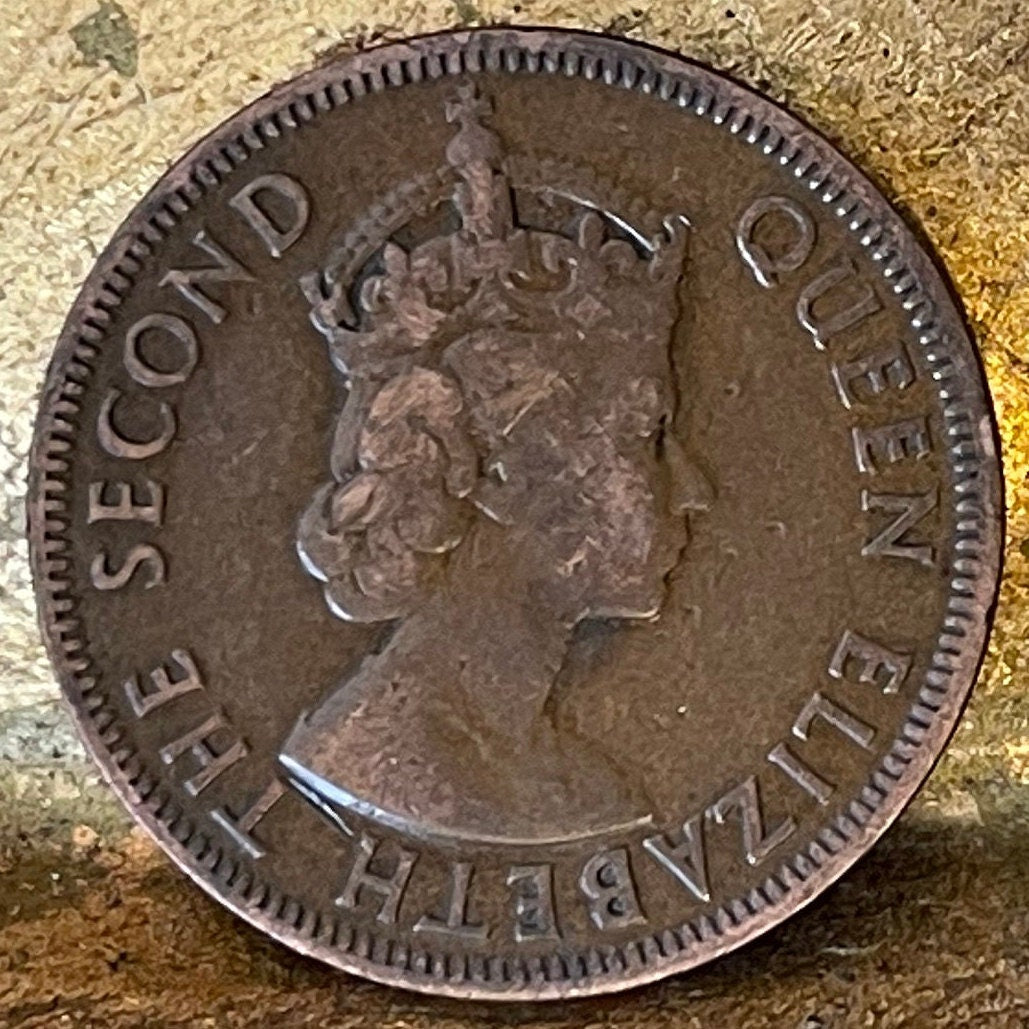elemintalshop
Bronze Age Man Bearing Oxhide Ingot 5 Mils Cyprus Authentic Coin Money for Jewelry and Craft Making (Tudor Crown)
Bronze Age Man Bearing Oxhide Ingot 5 Mils Cyprus Authentic Coin Money for Jewelry and Craft Making (Tudor Crown)
Couldn't load pickup availability
Bronze Age Man Bearing Oxhide Ingot 5 Mils Cyprus Authentic Coin Money for Jewelry and Craft Making (Tudor Crown)
Reverse: Standing figure of Bronze Age man holding copper "oxhide ingot" on shoulders, date and denomination below
Lettering: GOVERNMENT OF CYPRUS · FIVE MILS
5
Obverse: Crowned portrait of HM Queen Elizabeth II facing right, wearing the stylized heraldic Tudor Crown.
Lettering: QUEEN ELIZABETH THE SECOND
Features
Issuer Cyprus
Queen Elizabeth II (1952-1960)
Type Standard circulation coin
Years 1955-1956
Value 5 Mils (0.005)
Currency Pound (decimalized, 1955-1982)
Composition Bronze
Weight 5.64 g
Diameter 25.41 mm
Thickness 1.49 mm
Shape Round
Technique Milled
Orientation Medal alignment ↑↑
Demonetized Yes
Number N# 986
References KM# 34
Wikipedia:
Oxhide ingots are heavy (20-30 kg) metal slabs, usually of copper but sometimes of tin, produced and widely distributed during the Mediterranean Late Bronze Age (LBA). Their shape resembles the hide of an ox with a protruding handle in each of the ingot’s four corners. Early thought was that each ingot was equivalent to the value of one ox. However, the similarity in shape is simply a coincidence. The ingots' producers probably designed these protrusions to make the ingots easily transportable overland on the backs of pack animals. Complete or partial oxhide ingots have been discovered in Sardinia, Crete, Peloponnese, Cyprus, Cannatello in Sicily, Boğazköy in Turkey (ancient Hattusa, the Hittite capital), Qantir in Egypt (ancient Pi-Ramesses), and Sozopol in Bulgaria. Archaeologists have recovered many oxhide ingots from two shipwrecks off the coast of Turkey (one off Uluburun and one in Cape Gelidonya).
******
First crowned portrait of HM Queen Elizabeth II facing right, wearing the stylized heraldic Tudor Crown.
The Tudor Crown, also known as the King's Crown or Imperial Crown, is a widely used symbol in heraldry of the United Kingdom. While various crown symbols had been used for this purpose for many years previously, the specific Tudor Crown design was standardised at the request of Edward VII. It was never intended to represent any actual physical crown, although in shape it bears a close resemblance to the small diamond crown of Queen Victoria.
Upon the accession of Elizabeth II, she requested the design to be replaced with a representation of the St Edward's Crown (with depressed arches) which she wore at her coronation. Many, though not all, of the derived designs around the world were updated to match.
This portrait appeared on the obverse of the coins of Britain's colonies and dependencies (including Jersey), while only Britain and the Dominions (Australia, New Zealand, Canada and South Africa) were allowed to use the uncrowned effigy.
Source: https://coin-brothers.com/catalog/coin1555
Share










Still the best coin shop to buy from. I have loved every coin I have bought here. I will be purchasing more coins from this vendor. Love this coin!
As described. Prompt, safe delivery.
5 stars review from Shannon









